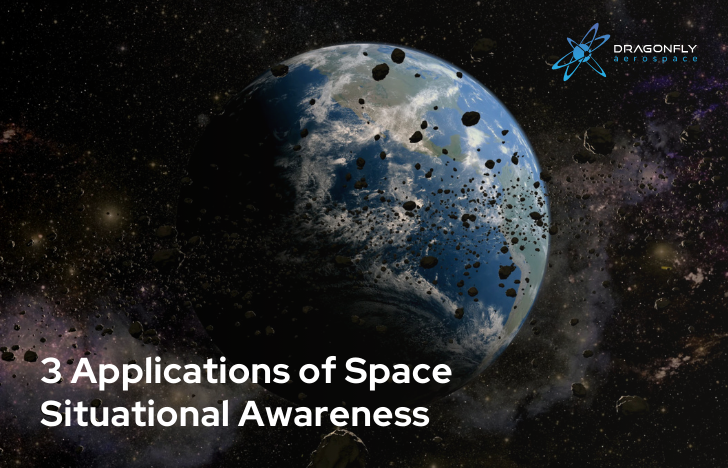
In our ever-evolving technological landscape, space has become a critical domain for both civilian and military activities, increasing the need for space situational awareness.
And, as our reliance on space-based assets grows, so does the importance of maintaining a clear understanding of what’s happening in Earth’s orbit. Space Situational Awareness (SSA) is a revolutionary tool that empowers us to monitor and manage the dynamic environment beyond our atmosphere.
Current SSA is based on tracking objects in space, identifying them, establishing their orbits, understanding their environment, and predicting future trajectories such that threats to existing operations may be predicted and evaluated.
Applications of SSA
1. Satellite collision avoidance
Space is not nearly as vast as one might think. With the increasing number of satellites, space debris, and other celestial objects orbiting Earth, collision avoidance is paramount. SSA plays a crucial role in tracking the trajectories of these objects, predicting potential collisions, and providing valuable data for satellite operators to make informed decisions.
By leveraging real-time data and predictive analytics, SSA systems enable satellite operators to adjust the orbits of their assets to avoid collisions, which helps to ensure the longevity and functionality of expensive spaceborne equipment. This capability is crucial for fostering sustainable practices that help prevent the creation of more space debris.
2. National security and defence
Space has become a vital frontier for national security, with countries relying heavily on satellite-based technologies for communication, navigation, surveillance, and more. SSA is for defence organisations to monitor and safeguard their assets in orbit.
By continuously tracking satellites, spacecraft, and potential threats, SSA systems can enhance national security by providing early warnings of potential adversarial actions in space. It’s proactive approaches like this that allow nations to take necessary measures to protect their space in the evolving landscape of space-based security.
3. International collaboration and space traffic management
The international community increasingly recognises the need for collaboration in managing space activities to avoid congestion and potential conflicts in Earth’s orbit. SSA facilitates cooperation by providing a common understanding of the space environment and is hugely beneficial in space traffic management (STM).
Through shared data and information exchange, countries can collectively work towards effective STM, reducing the risk of collisions and ensuring the responsible use of space. Collaborative efforts in SSA can lead to the development of standardised practices and regulations, fostering a safer and more sustainable space environment for all.
SSA has evolved from a niche capability to a basis of our modern technological infrastructure. Its multifaceted applications, from collision avoidance to national security and international collaboration, highlight its indispensable role in shaping the future of space exploration and utilisation.
As we continue to venture into the cosmos, the importance of Space Situational Awareness will only grow, ensuring a safer, more secure, and sustainable space environment for generations to come.
